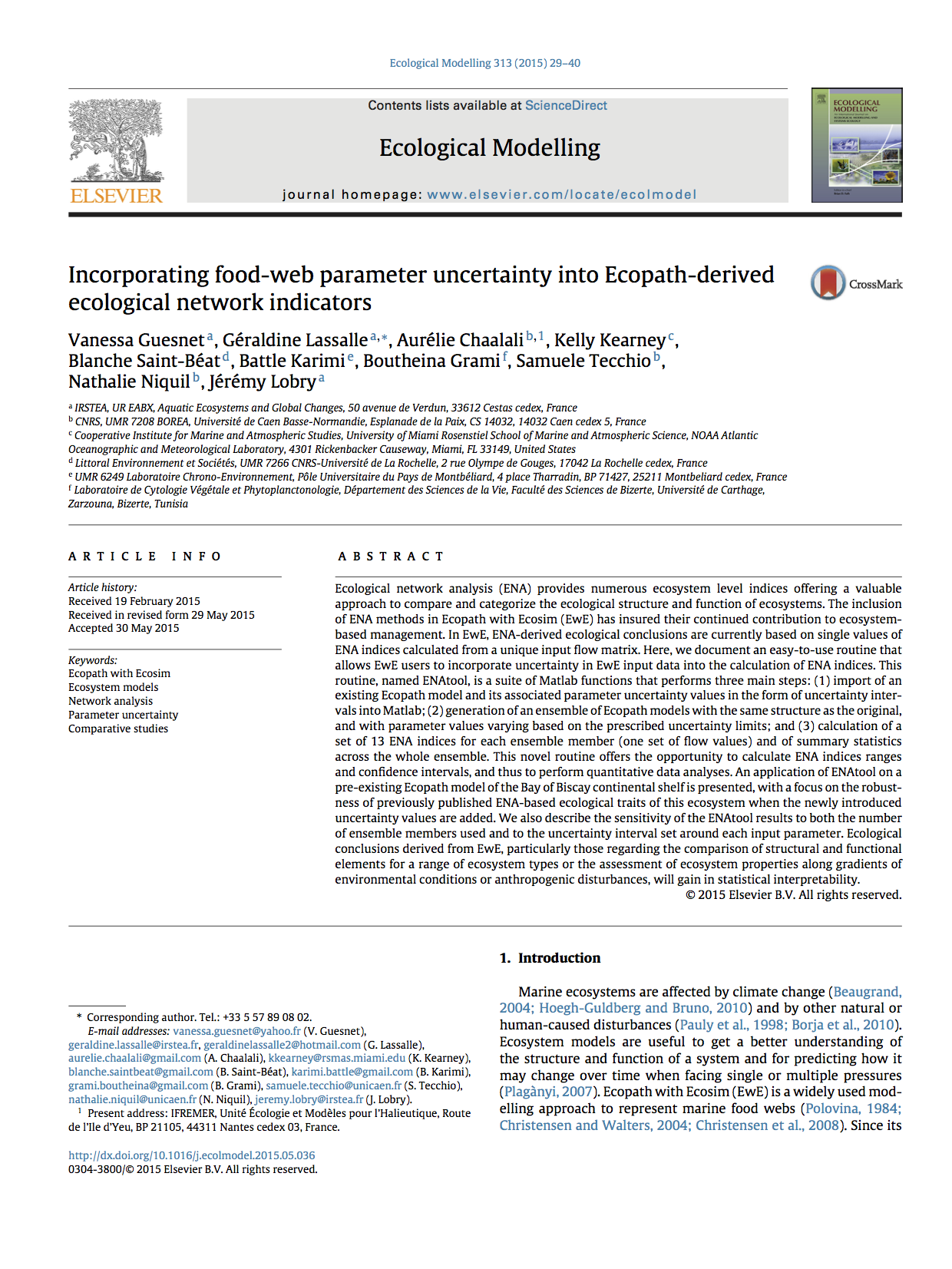Incorporating food-web parameter uncertainty into Ecopath-derived ecological network indicators
Guesnet, Vanessa and Lassalle, Géraldine and Chaalali, Aurélie and Kearney, Kelly and Saint-Béat, Blanche and Karimi, Battle and Grami, Boutheina and Tecchio, Samuele and Niquil, Nathalie and Lobry, Jérémy
Ecological network analysis (ENA) provides numerous ecosystem level indices offering a valuable approach to compare and categorize the ecological structure and function of ecosystems. The inclusion of ENA methods in Ecopath with Ecosim (EwE) has insured their continued contribution to ecosystem-based management. In EwE, ENA-derived ecological conclusions are currently based on single values of ENA indices calculated from a unique input flow matrix. Here, we document an easy-to-use routine that allows EwE users to incorporate uncertainty in EwE input data into the calculation of ENA indices. This routine, named ENAtool, is a suite of Matlab functions that performs three main steps: (1) import of an existing Ecopath model and its associated parameter uncertainty values in the form of uncertainty intervals into Matlab; (2) generation of an ensemble of Ecopath models with the same structure as the original, and with parameter values varying based on the prescribed uncertainty limits; and (3) calculation of a set of 13 ENA indices for each ensemble member (one set of flow values) and of summary statistics across the whole ensemble. This novel routine offers the opportunity to calculate ENA indices ranges and confidence intervals, and thus to perform quantitative data analyses. An application of ENAtool on a pre-existing Ecopath model of the Bay of Biscay continental shelf is presented, with a focus on the robustness of previously published ENA-based ecological traits of this ecosystem when the newly introduced uncertainty values are added. We also describe the sensitivity of the ENAtool results to both the number of ensemble members used and to the uncertainty interval set around each input parameter. Ecological conclusions derived from EwE, particularly those regarding the comparison of structural and functional elements for a range of ecosystem types or the assessment of ecosystem properties along gradients of environmental conditions or anthropogenic disturbances, will gain in statistical interpretability.
